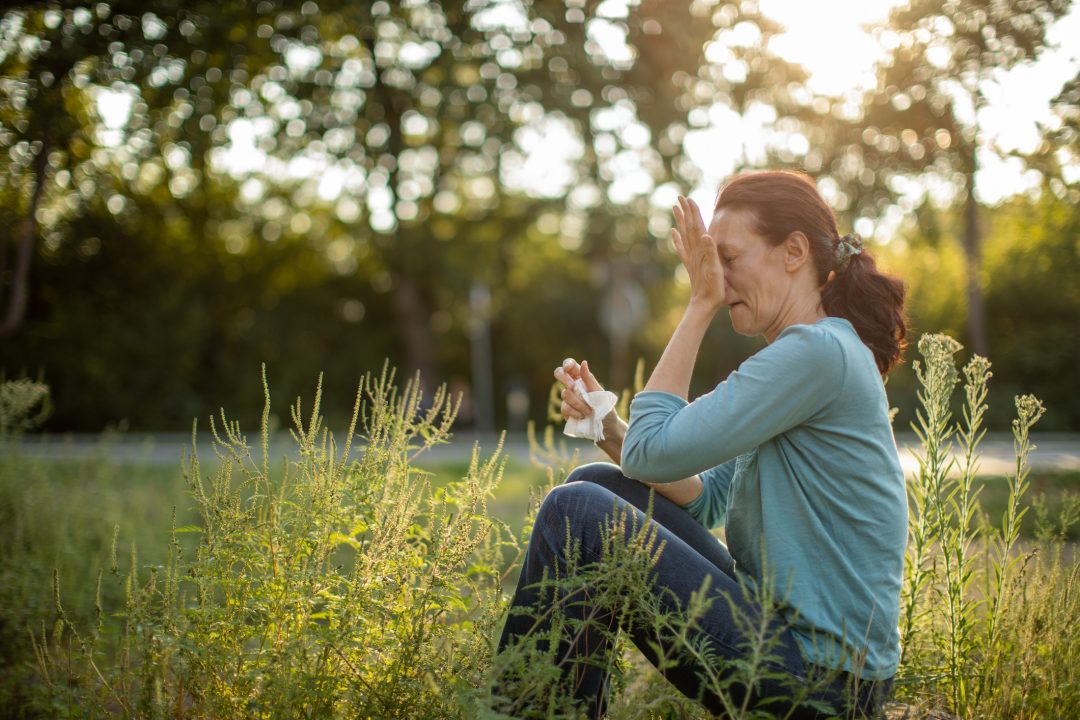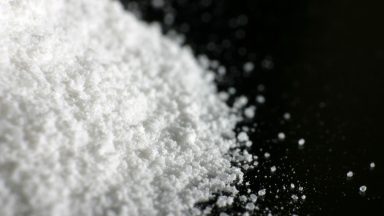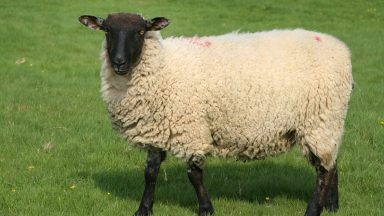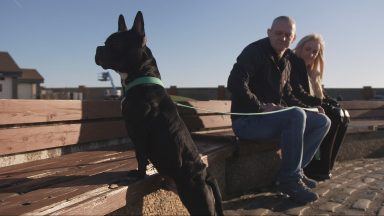While most of us enjoy the first bursts of warmer and sunnier weather in March and April, it’s around this time that the first of the season’s pollen spores begin to dance through the air.
WHEN DOES THE SEASON BEGIN?
April really kicks off the hay fever season as trees start to come to life. As those buds open, birch trees release their pollen, which can cause a spike in pollen levels, especially from mid-April to mid-May.
The good news? Only about 5% of people are affected by tree pollen, so for most, it’s not something to worry about.
THE WORST TYPE OF POLLEN
Grass pollen is often the worst and most dreaded of all the pollens, especially when we get some early warm and sunny spells in spring.
While it can start a bit earlier, in Scotland the peak usually hits in June and July, when the grass is growing fastest and in full bloom.
But how do those tiny blades of grass become such a nightmare? What exactly is pollen, and how does it end up filling the air (and unfortunately our nostrils)?
If we were to peek at grass pollen under a microscope, it looks a bit like tiny footballs or rugby balls in shades of brown and yellow.
Of course, we can’t see them with the naked eye, but billions of these little pollen grains float around in the air on dry days with a light breeze.
They come from the tiny flowers on grass blades—nothing like the showy flowers we’re used to. These subtle flowers release pollen when shaken by even the gentlest wind, which is great for pollination but not so great for our sinuses!
You might spot a few feathery spikes in your grass, often around the same time clover appears, which is a sure sign that grass is blooming.
If grass is cut frequently, you’ll see fewer of these flowers, but with more areas being left wild to help out bees in the summer, the number of feathery grass flowers (and the pollen they release) can rise.
So, if you’re prone to hay fever, it’s probably best to steer clear of long grass and definitely don’t run through it or roll about in it!
THE BEST WEATHER FOR HAY FEVER SUFFERERS
In my pollen forecasts I usually mention how rain is a bit of a relief for hay fever sufferers, but there’s a small catch.
While rain helps to wash pollen out of the air, it also has the downside of giving plants a nice watering boost, which can make them even sprightlier, releasing more pollen when the weather dries up again.
Summer thunderstorms might help clear pollen too, but large raindrops can break pollen into smaller particles, which are much easier to inhale.
This can sometimes lead to worse asthma symptoms for some people. So while rain can be a relief in some ways, it can also make things trickier in certain situations.
For hay fever sufferers, the ideal conditions are cool, cloudy, and calm days. Lower temperatures slow down pollen production, and the lack of wind means the pollen stays closer to the ground instead of being thrown into the air.
IS IT TRUE THAT HAY FEVER IS GETTING WORSE?
Yes, there’s a few reasons for this. With a warmer climate now we have longer growing seasons which means flowers start earlier and last longer which means the season is extended compared to what it was several decades ago.
I’m sure I’m not the only one who’s ended up doing the last cut in November!
Pollution also makes things worse as certain particles can break pollen down into smaller parts which can be more easily inhaled and go deeper in the lungs – so in more urban areas this can make things worse.
It’s also thought that because we spend less time outdoors compared to the days when more people worked outside on the land, we’ve got less immunity to pollen and therefore suffer more.
Recent research has suggested that nearly half of us now have some symptoms of hay fever.
SCOTLAND’S BEST PLACE TO LIVE FOR HAY FEVER SUFFERERS
I’d put Shetland and Orkney at the top of the list as I rarely have to have to put a medium symbol here on my pollen forecasts, never mind high.
This is because the Northern Isles have less vegetation and more often winds which blow any pollen out to sea.
The Hebrides are a good place to be too with very little pollen accumulating in the air here before it is swept out into the Atlantic or onto the mainland.
Higher areas in the Grampians will also be slightly better with cooler conditions and a shorter growing season.
SCOTLAND’S HAY FEVER HOTSPOT
Glasgow is probably one of the worst places for hay fever suffers due to higher pollution levels, which help to break pollen down and make it easier to be inhaled deep into lungs.
The recent introduction of lower emission zones will at least help to reduce the risk in some areas, but with vehicles still in high concentrations on the edge of city centres it’s still likely to be very bad at times during the summer months.
High pressure along with settled weather is the worst as this can trap pollen and pollution for days in a city which leads to a build-up of worsening conditions and increases the risk of asthma and other respiratory issues.
I’d also mention Stirling and Perth as places where hay fever sufferers might have a bit more trouble. These cities are surrounded by lots of farming, which means there’s often more pollen in the air.
Being landlocked also means that, unlike coastal areas, there’s no sea breeze to help clear the air, so both pollution and pollen can come from any direction. This can make the air a bit more challenging for those sensitive to allergens.
Edinburgh, Dundee and Aberdeen are perhaps not quite as bad due to being close to the sea, where sea breezes will help to bring cleaner air in from the sea on nice summer days.
DIRTY AIR FROM EUROPE
Sometimes hay fever can become bad in Scotland because of intense farming and pollution build up in places such as Germany, France and Poland.
During long spells of fine weather and high pressure over Central Europe sometimes this pollution and pollen can be dragged north over the UK increasing levels here – so watch out for those dirty south easterlies on my weather maps this summer!
Follow STV News on WhatsApp
Scan the QR code on your mobile device for all the latest news from around the country






























